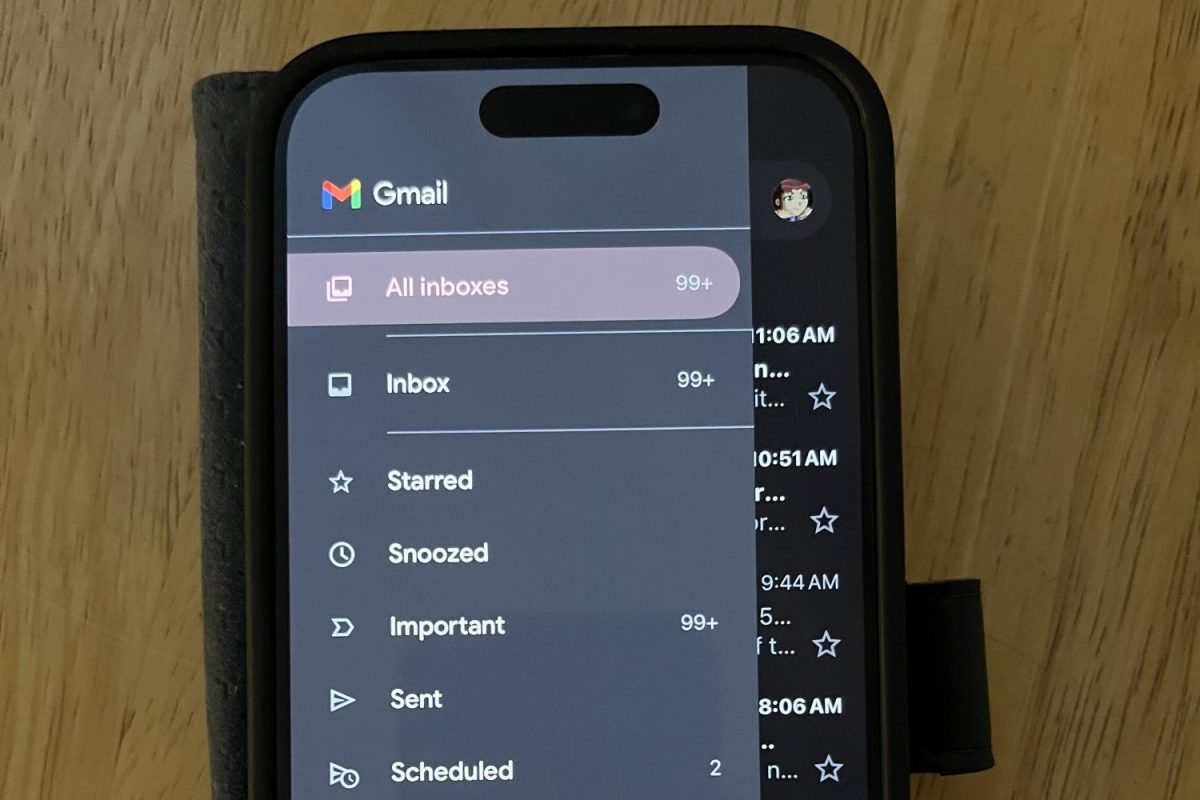Schools across Ohio have been implementing new phone policies under House Bill 250, signed into law by Gov. Mike DeWine on May 24; the law went into effect at the start of the 2024-25 school year. At Jonathan Alder High School, there are aspects of learning that have become negatively impacted, with several issues arising that could be addressed by relaxing the policies. A solution would involve giving teachers the discretion to allow cellphones for educational purposes or personal reasons discussed with them.
House Bill 250 and Model Policy
The language of House Bill 250 is vague, offering little clarity or detail about the specific phone policies schools should adopt. The bill grants significant leeway to individual school boards to create their own policies. As a result, schools can implement strict regulations or none at all, as long as they comply with the broad goals outlined in the bill.
The law mandates that each school board’s policy must limit cellphone use during school hours to reduce distractions in the classroom. The Ohio Department of Education, under the law, was tasked with drafting a model policy for schools to follow. This model policy prohibits cellphones during school hours, with exceptions only for students with 504 plans, IEPs, or health concerns.
The model policy goes so far as to state that cellphones should not even be on a student’s person: “Students are prohibited from using cell phones at all times… Students shall keep their cell phones in a secure place, such as the student’s locker, a closed backpack, or a storage device provided by the district, at all times when cellphone use is prohibited.”
Policy Application and Rationale
Jonathan Alder High School’s phone policy closely followed the model policy, restricting the use of cellphones, smartwatches, or other communication devices during instructional time. The only exceptions are for students with 504 plans, IEPs, or medical documentation.
These policies are not unique to Jonathan Alder. Other districts, including Hilliard City School District, Dublin City School District and Marysville Schools, have adopted similar restrictions.
I understand the rationale behind the bill and the model policy. Research supports the idea that limiting cellphone use improves student performance. Additionally, there is ample evidence of the negative impact of social media and cellphone use on student mental health and emotional well-being.
I also agree that it should not be the teachers’ responsibility to manage students’ cellphone usage. However, the current restrictions at Jonathan Alder—and other schools—overlook issues that could be addressed with slight modifications to the policy.
The Need for Flexibility in the High School Setting
At the high school level, students must learn to use their mobile devices responsibly. Barring cellphone use entirely limits students’ ability to practice this self-regulation. Without the opportunity to build trust with their teachers and demonstrate responsible use of technology, students may struggle to manage their devices in the future, especially as they transition to higher education or the workforce.
Limiting Communication With Family and Emergencies
While the policy allows for cellphone use in cases of 504s, IEPs, and medical needs, many students face extenuating circumstances not covered by official documentation. For example, many students care for family members and need immediate access to communication. Restricting cellphone use risks the wellbeing of students’ families and delays their ability to respond to urgent situations.
Family emergencies, while not uncommon, also present a challenge. Having to go through the school office to receive a phone call or be called to the office takes valuable time. In contrast, a quick text or phone call from a cellphone could immediately resolve the situation, without disrupting the student’s learning.
Consider a student who forgets an item at home, like their lunch. Without a cellphone, the student must take time away from class to visit the office and contact a guardian, only to risk not reaching them if the call is mistaken for spam. This delay not only wastes class time but also undermines the student’s ability to stay focused on their schoolwork.
Barriers to Classroom Learning and Teacher-Student Communication
The limitations on cellphone use also hinder communication within the classroom. Many teachers use email or online platforms like Canvas or ProgressBook to communicate important updates, including assignments, schedule changes, and due dates. Previously, students often used their phones to stay up-to-date on these communications, but under the current policy, they are unable to do so.
While there are school-provided devices, they are not always available, and internet access can be unreliable. This makes it harder for students to access timely information, which has started to affect some students’ academic performance. This has become a significant problem for many students, including myself and my peers. We’ve missed critical updates because we can no longer check emails or assignment schedules on our phones during the school day.
Additionally, many students do not have personal computers, relying on school-issued devices. Finding a school Chromebook between classes or during free periods is inconvenient and often impractical. The process of accessing a device to check assignments, for example, is more time-consuming than simply checking a phone.
The Practical Benefits of Cellphones in the Classroom
Cellphones also offer practical educational benefits. In previous years, students have used their phones for tasks such as translating vocabulary in foreign language classes, recording interviews for journalism, scanning QR codes for assignments, and taking photos of notes. Many teachers have also allowed students to submit pictures of assignments on paper, which helps reduce the burden of keeping track of physical paperwork.
By limiting access to these tools, schools are disregarding the potential for mobile devices to enhance the learning experience. Technology is meant to improve productivity and create new opportunities for students, not to inhibit them.
Revising the Policy for the Future
The goal of technology should be to improve society’s functionality and efficiency. The current phone policies in Ohio schools are becoming a step backward, rejecting advancements that could improve communication and learning. Rather than limiting the use of technology, schools should be encouraging students to use it responsibly and effectively. Preparing students to navigate a world that increasingly relies on technology is essential, and restricting access to these tools only hinders their growth.








